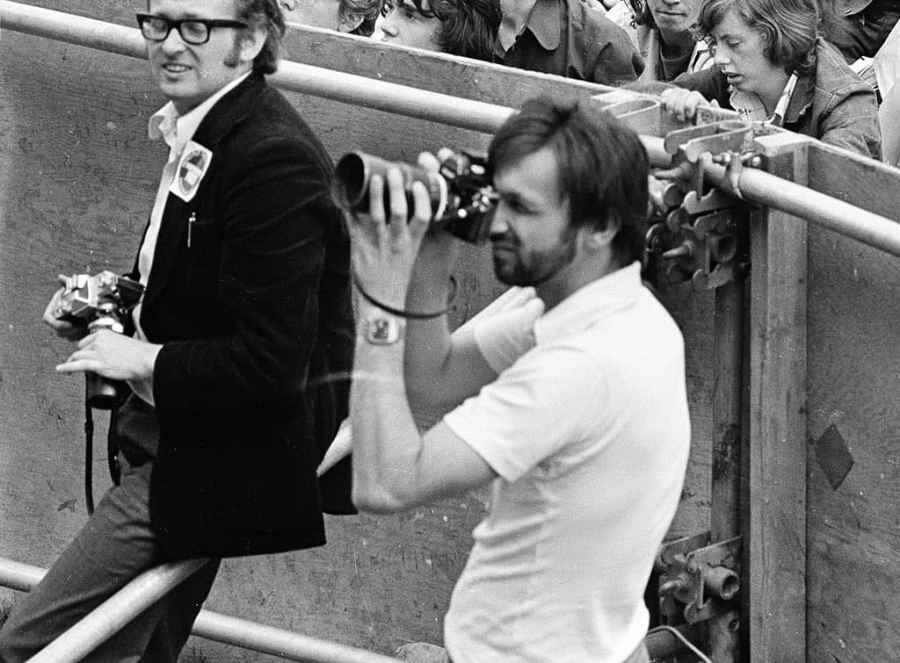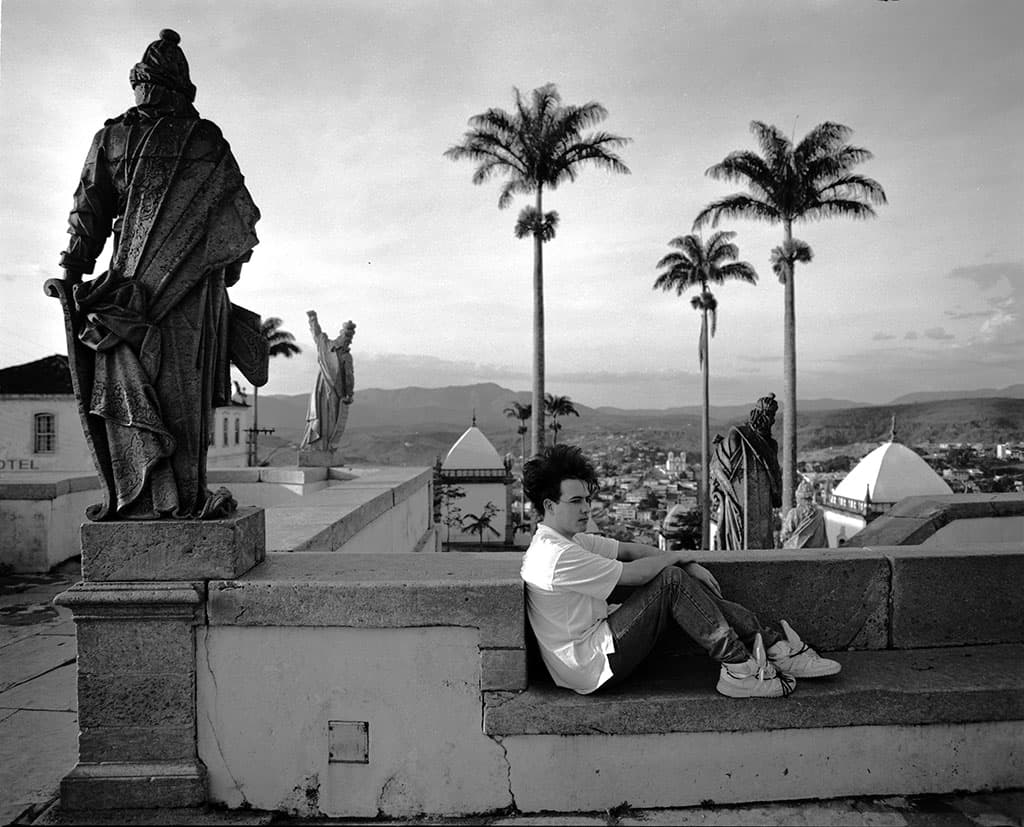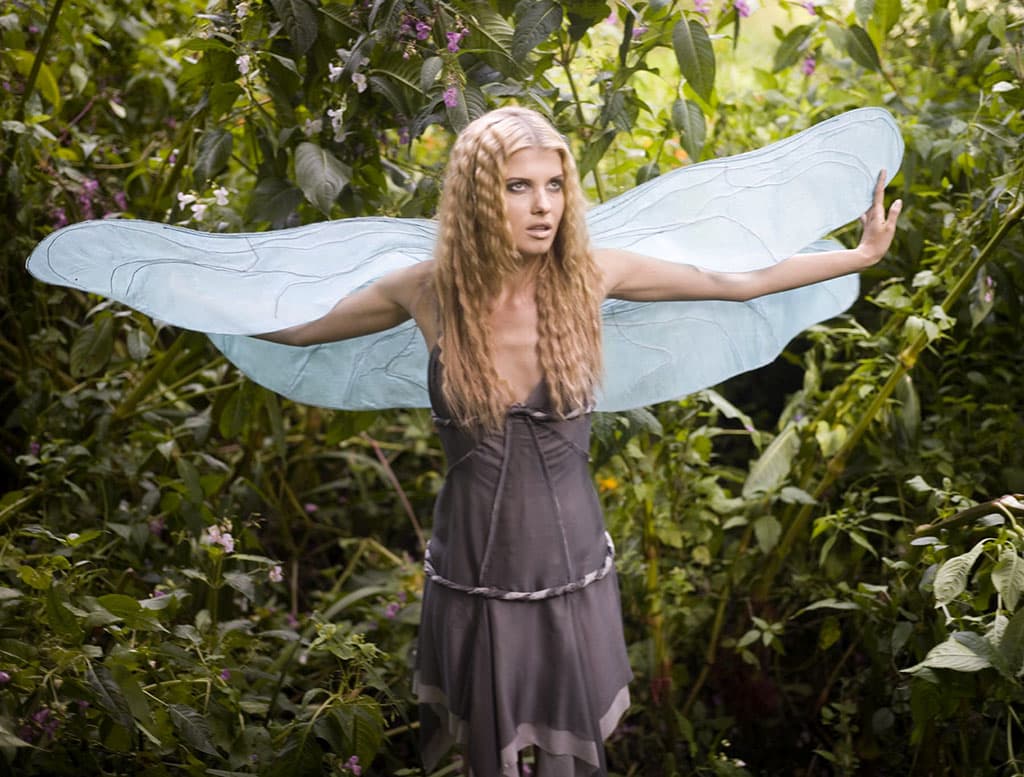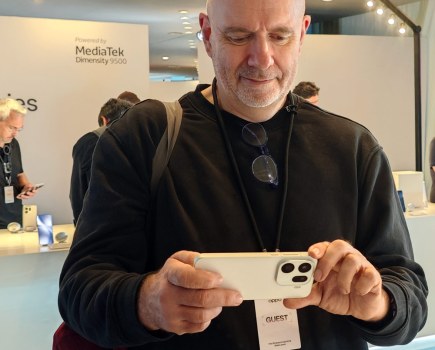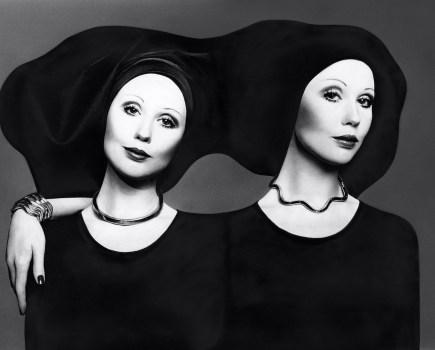Lorraine Milligan has worked with some of the music industry’s leading photographers but one man stood out – Michael Putland, who passed away two years ago today.
‘Little did I appreciate, when my Uncle Alan encouraged my photography back in the 1950s, that this would lead me to a career photographing nearly all of my heroes. It has been a fantastic ride through an incredible period of music history, which combined my two great loves: music and photography.’ Those are the words of my good friend Michael Putland, who sadly passed away two years ago.
In the course of a long and hugely successful career, he photographed the likes of John Lennon and Yoko Ono, Roger Daltry, Jeff Beck, Billy Joel, Madonna and Michael Jackson, and toured the world with acts such as The Rolling Stones, Eric Clapton, Wham and The Cure.
As I’m a former dancer and choreographer, the fusion of music, performance and images have always been an important part of my life but it wasn’t until I embarked on my second career as a hair and make-up artist that I came into Michael’s orbit. Fresh out of Shepperton Studios make-up school in 2003 I was asked to do a booking at Pinewood Studios that resulted in me being recommended to Retna Pictures, which was owned by Michael.
I was taken onto their books as a freelance hair and make-up artist for their lifestyle and beauty photographers, and when I finally got to meet Michael, we immediately connected. It was clear that we shared the same artistic eye and love of perfection, and so began a long creative association and cherished friendship.
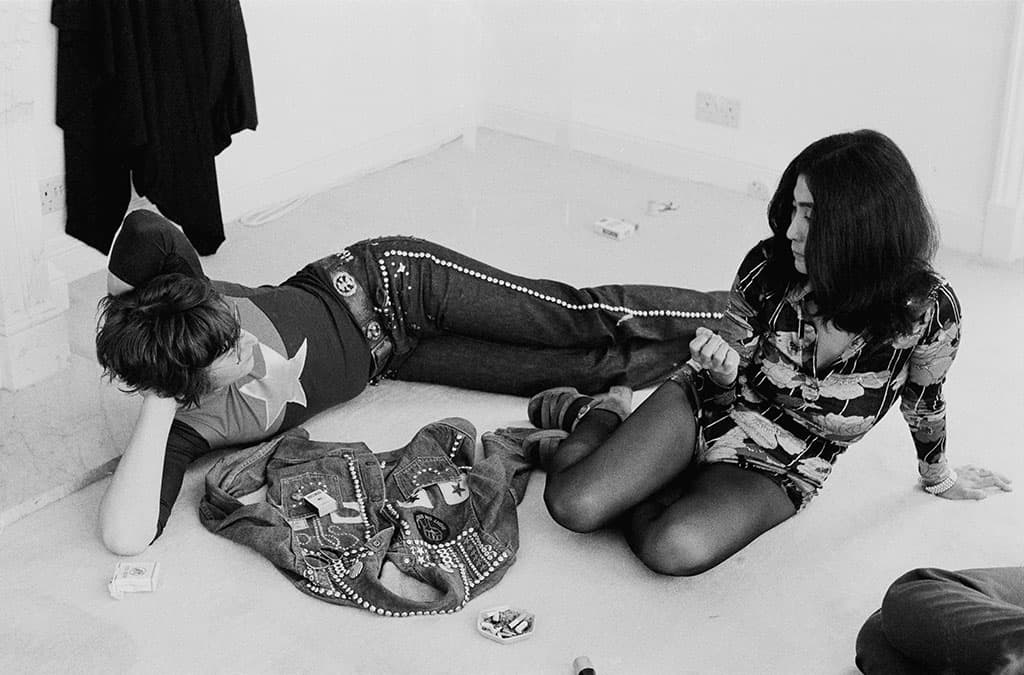
Former Beatle John Lennon (1940 – 1980) with his wife Yoko Ono at his home, Tittenhurst Park, near Ascot, Berkshire, July 1971.
Michael Putland was born in 1947 and grew up in Harrow. He left school at 16 and worked as an assistant to various photographers, including Time Life photographer Walter Curtin. But his passion was music.
One of the first rolls of colour he shot was of Jimi Hendrix playing at Woburn Festival in 1968. ‘I just took one roll, I could not afford more,’ he later recalled. ‘Beat Instrumental used it on the cover, then lost the whole roll, which was never recovered!’
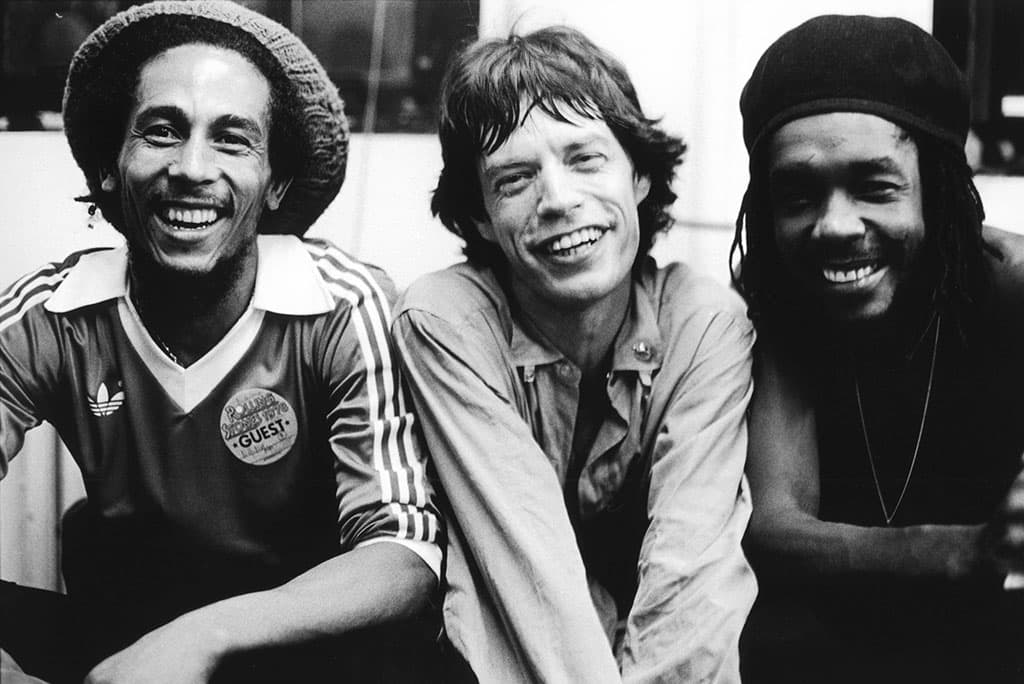
Bob Marley, Mick Jagger and Peter Tosh backstage at a Rolling Stones gig. The Palladium, New York, 1978
You used to be able to just walk into magazines, so Michael would visit the office where Melody Maker, New Musical Express and Disc and Music Echo were based, but he was too nervous to put his photos on their desk, so he would go next door to Cage & Aviary Birds magazine and hide in their office.
Then, when it was all clear, he would dart into Melody Maker, leave the images on their desk and swiftly exit. After a couple of years with no lucky break and debts mounting, Michael decided to quit photography and get a ‘proper job’ as a printer. As he was packing up his studio, the phone rang. It was Judy Nokes at Disc and Music Echo.
‘We’ve got a job for you,’ she said. Michael explained that he had quit photography, but Judy persisted: ‘It’s Mick Jagger.’ Michael’s response was immediate: ‘Ok, I’ll do it!’ This was the start of a 17-year relationship with The Rolling Stones.
In 1973 he toured with them for six weeks. He later recounted: ‘The first day, in Vienna, I shot a press call for Mick, the sound check and then the concert… took the first flight next morning to my darkroom in London, processed the film in three-gallon tanks, made the prints and once dried, was back in the car hand-delivering the prints to music mags and newspapers; then back to the airport.’
Michael shot continuously for Disc and Music Echo, Sounds, Smash Hits and Q, as well as for artists and record labels. It was a jet-set life that found him on the road a lot, but it wasn’t always a rock’n’roll lifestyle.
‘I came off the Stones tour and immediately went on The Osmonds’ tour,’ he once recollected. ‘They were lovely, really sweet, but it wasn’t what I was used to. It was very good financially to shoot them, they were huge. I remember the PR for Polydor saying, “You look quite ashen, Michael.” I was sitting at the back of the plane drinking milk, because there was no booze!’

English pop/ska band Madness photographed in London, 1981. This image was used on the cover of 7, the group’s third album
Back in 1969, aged 22, Michael had set up his own studio in the basement of 40 Churton Street, London – an address that, by pure coincidence would years later become the home of Grays of Westminster. Gray Levett, of Grays of Westminster, told me about the parallels of their lives.
‘When I moved back to the UK from America, I was working in the music industry and had the idea for a camera business,’ Gray explained. ‘I started Grays of Westminster in my sister’s modest basement, but sharing the space was just not workable, so I started looking for premises. A barber’s shop became available, at 40 Churton Street.
Time had not been good to it but I decided to take it on, and discovered a darkroom, behind a wall in the basement. When I removed the door, the smell of the fumes almost took my head off! There were stalactites of limestone hanging off the old metal enlarger.
‘I came into the shop one day and Raffi, our sales manager, was serving this very tall, slim, distinguished- looking chap. Michael introduced himself and explained, “I just had to come and buy my Nikon from you, because between 1969 and 1973 I was the struggling photographer in the basement of this building!”
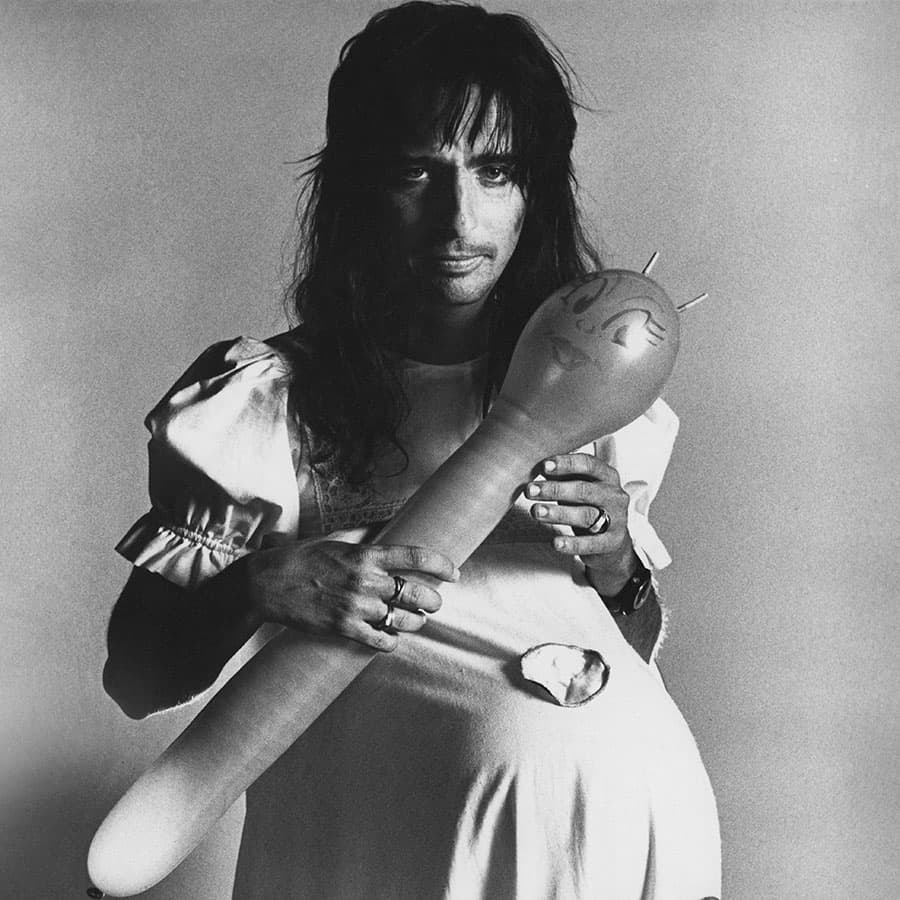
Alice Cooper wearing a dress and false pregnancy bulge, 1974. Shot in what is now Grays of Westminster’s basement showroom
‘I almost fell over! Michael was a hero of mine. I told him about my discovery of the darkroom. We went down to the basement that had been his studio and he pointed to the spot where I was standing. “That’s where I photographed Alice Cooper,” he told me.
‘Michael and I discussed gigs that we had photographed over the years and discovered so many parallels in our lives; we were like satellites that had navigated around each other. We became firm friends. I couldn’t get over what an incredibly humble man he was. He was a gentleman of the old school with talent to burn and it was a joy to get to know him, everybody in the shop adored him.’
This generosity of spirit is something that comes up repeatedly among those who knew Michael. Respected music photographer Jill Furmanovsky recounted an incident when she was starting out. ‘In the heady Rainbow days of my early career I met Mike Putland in the orchestra pit during a gig.
It was 1972 and I was an 18-year-old art student, whose entire training consisted of a two-week course in photography before being offered the chance to work at The Rainbow as their photographer. The problem was that I was vastly under-qualified for the job.
‘I found a way to increase my technical knowledge during one particularly long drum solo that was often part of a live gig: ask a professional. Not all of them were willing to help a young student – one even elbowed me out of the way! But Mike was one of the generous ones.
I remember shouting to him above the crashing cymbals: “How do you process uprated Tri-X?” With a cheeky smile he shouted back, “Microphen, 9 1/2 minutes, 68 degrees for 1000ASA!” From then on I knew how to process uprated black & white film and also gained a much-respected, talented friend, on my journey to becoming a professional photographer. I will never forget his generosity.’
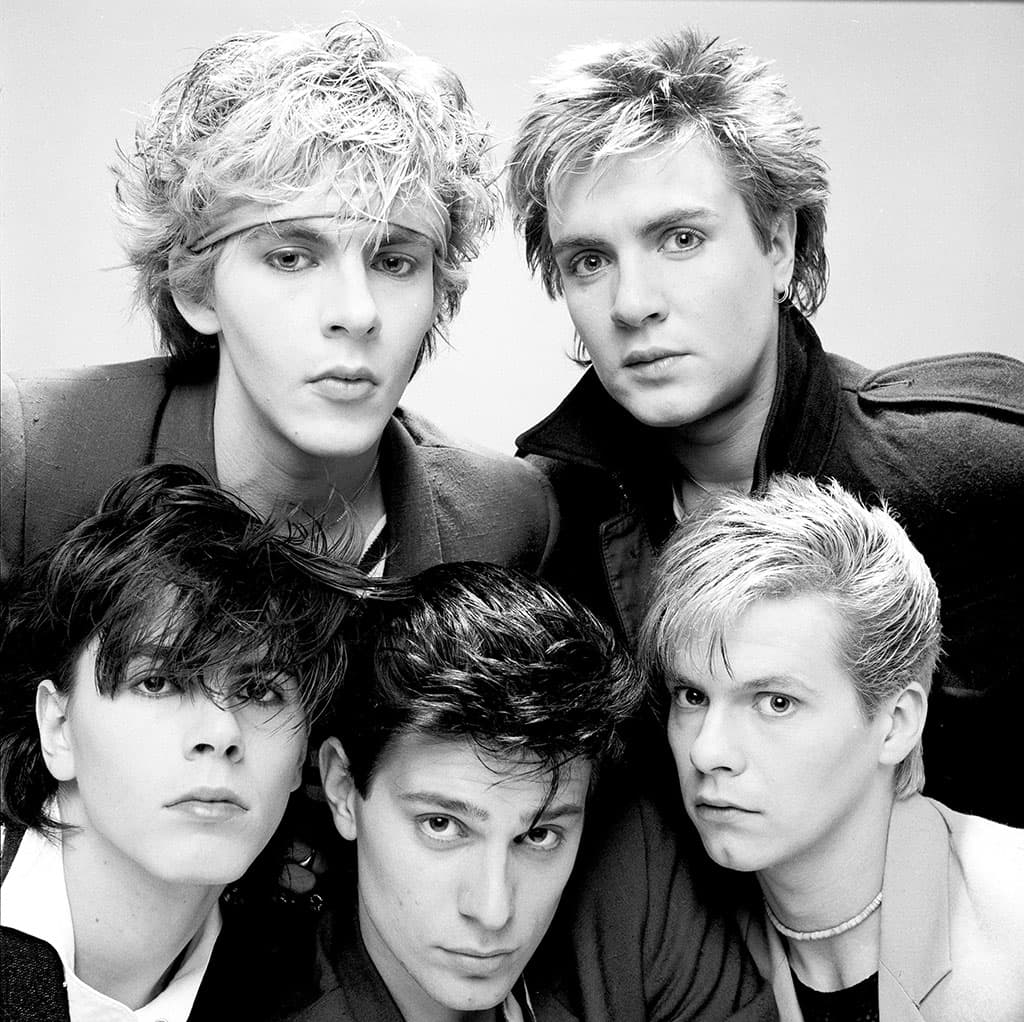
Duran Duran, London, 1981. Left to right (back): Nick Rhodes, Simon Le Bon. (Front) John Taylor, Roger Taylor, Andy Taylor
Relocating to New York in 1977 Michael founded the photo agency Retna Pictures, which fast became one of the most respected photo libraries in the world. It included rare and early images of The Beatles, The Rolling Stones, Led Zeppelin, Bob Marley, Elton John and hundreds of other major performing artists; and later expanded to include events as well as fashion and lifestyle stock shots.
Demand for Michael’s work was high, he was at the top of his game during the revolution in music photography and was able to navigate and move with the times.
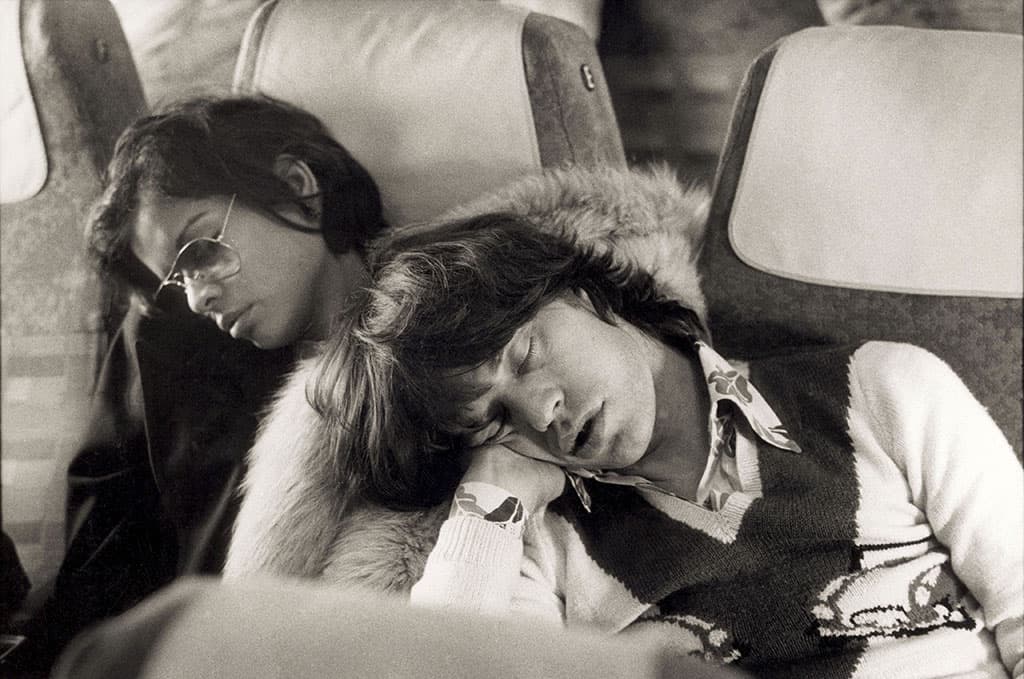
Mick Jagger sleeping alongside his wife Bianca Jagger, the morning after the end of their European Tour party in Berlin, Germany, on 20 October 1973
Matthew Butson, vice president of Getty Images and a friend of Michael’s, told me, ‘I was fortunate to have known Michael for a number of years, long before he became a contributor to Getty Images, well over a decade ago. Though he left behind a wonderful body of work this alone does not do justice to the man himself.
It may be a cliché, but Michael was one of the true gentlemen in the often-cut-and-thrust world of music photography – kind, thoughtful and always truly humble. Michael’s constant positivity was only equalled by his passion for photography.
‘Setting up the Retna Agency enabled Michael to expand his skillset further, and his support for his fellow photographers was considerable, but his true calling was always the camera and he admitted to me that running a business was never part of the grand plan, so he was relieved to return solely to his first love, albeit some 30 years later than expected.’
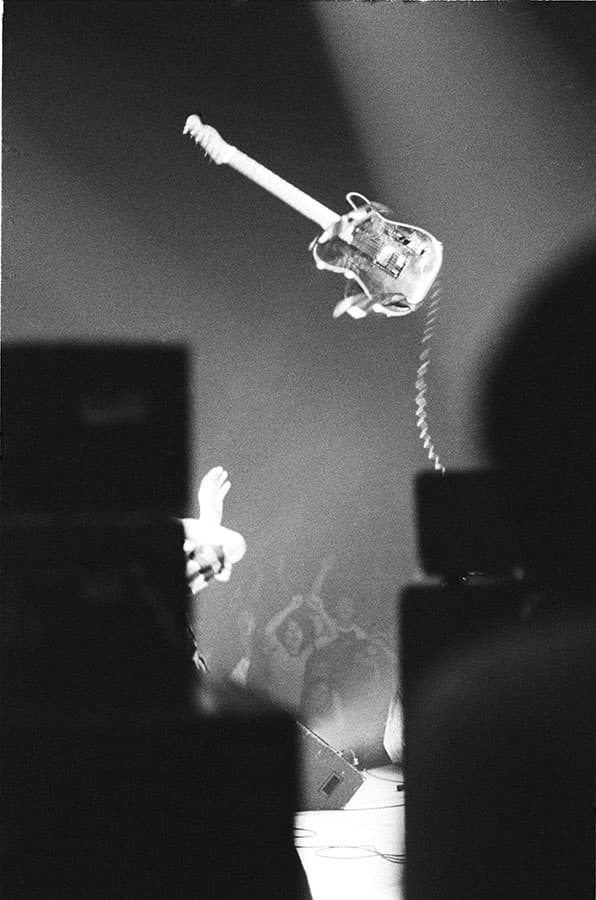
Pete Townshend of The Who throws his guitar in the air on stage at Madison Square Garden, New York, USA, September 1979
Michael spent his later years working mostly on personal projects. For 15 years we worked together at home and abroad for Retna, from The Hebrides to Miami Beach. We also created our own themed fashion and beauty-based projects when budget and availability allowed. With Michael, I would often have to start the hair and make-up at dawn, so we could capture that ‘golden light’ he so loved.
The models loved Michael because he had a way of naturally putting them at ease. Michael’s style was cinematic, real, and honest. He captured the essence of the model. We were both particularly fond of 1950’s style, and of ethereal beauty; he even had a stylist create a human-sized set of dragonfly wings, because he knew about my love of fairies.
The last years of Michael’s life were busier than perhaps he had anticipated, with a series of exhibitions including the 2014 Getty Gallery’s 50 Year Retrospective. Among our last assignments together Michael and I had the pleasure of working with the sensational Norma Winstone MBE at her home in Kent, and a new young talent, Marie Naffah, on location in London – two outstanding jazz singers of our time at both ends of the age scale.
On 18 November 2019 Michael sadly passed away, peacefully at home, after a short illness. He is sorely missed by so many who mourn his passing, but Michael has left an indelible imprint through his work, and a lasting legacy.
Tributes to Michael from friends and family
Sophie Putland, Michael’s wife
‘During our 40-year friendship prior to becoming life partners I knew only a fraction of Michael’s extraordinary career, mainly from amusingly told, self-effacing stories of his experiences and travels. This is perhaps a testament to Michael’s humility and overriding interest in listening to others rather than himself.
These same qualities enabled him to place those he photographed at ease, not only allowing the soul of his subject to be seen, but in doing so telling us so much about the gentle man behind the lens. Michael always had the utmost respect for everyone he photographed and keenly felt the privilege not only of the opportunities he was given, but the trust he was offered which, needless to say, was completely mutual.’

David Bowie paints the coving of his ground-floor flat at Haddon Hall in silver paint, Beckenham, 24 April 1972. Taken just after the recording of The Rise and Fall of Ziggy Stardust and the Spiders from Mars, before its release on 6 June, 1972
Julie Grahame, Director of Retna NY
‘Michael was first my boss, then my business partner and dear friend. My mentor. We met in 1989 when I interviewed for a job at Retna UK. It was apparent that Michael respected and elevated women in ways that I had not encountered before. He was so open and non-judgmental, with a thirst for photography, and for life and people in general.
We worked with hundreds of photographers, and he supported them too, making sure that if there were jobs around that the younger ones got them. He wasn’t interested in ego or competing. Michael was always respectful of the people he had photographed and perpetually humble about his own photography.
In 1992 I moved to Retna New York to “kick some ass” and Michael would visit regularly. He taught me how to be an ethical businessperson, and to do the monthly accounts on the back of an envelope.’
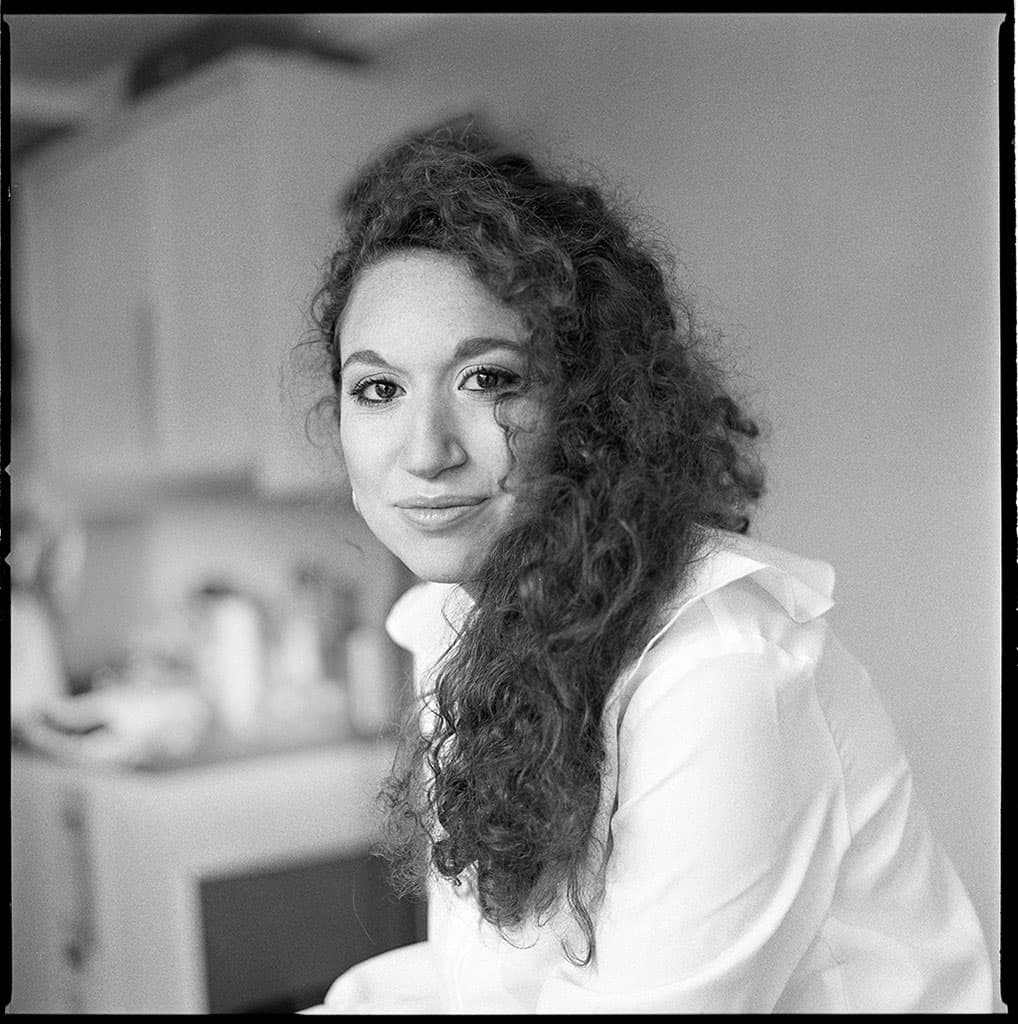
Jazz singer Marie Naffah – one of the last assignments Lorraine did with Michael before he became ill
Matthew Butson, VP, Getty Images
‘Michael’s last book, The Music I Saw, is a fitting testament to his craft over six decades and he never failed to acknowledge the great part that fellow music photographer and future business partner David Redfern played in developing his career. David and Michael’s paths crossed many times covering gigs during the sixties and they became firm friends.
It was David who helped Michael gain access to the hallowed ground that was BBC Television Centre and ultimately to Top of the Pops and The Old Grey Whistle Test. In those days, access to the stars was considerably easier than it is today. Michael’s charm and impeccable manners enabled him to connect with the many musicians who provided the soundtrack to our lives.
‘Whether covered in foam and nearly suffocating for The Rolling Stones It’s Only Rock’n’Roll video shoot, or simply knocking on David Bowie’s door whilst Bowie was decorating his home in Beckenham (in full Bowie regalia, paintbrush in hand), Michael was at ease with the great and good and developed relationships with many of the stars he shot over the years, not least Bowie whom Michael shot in 1973 at the first concert on the fabled “Ziggy Stardust” tour at Borough Assembly Hall in Aylesbury.’

Kylie Minogue at the poetry Olympics Royal Albert hall London 1996 Australian pop singer and actress Kylie Minogue attends the Poetry Olympics at the Royal Albert Hall in London, 1996.
Edu Hawkins, music photographer
‘It is the enormity of Michael’s kindness, humility and generosity of spirit that radiate most from his images. People liked him. He put them at ease and they were comfortable in his presence. Michael’s pictures tell us as much about the person behind the lens, as the people in front of it.
The essence of good music photography is the same as the essence of good music – communication of personality, moment and feeling always wins over technique. To my mind, Michael was a bluesman with a camera.’

Michael’s last book, The Music I Saw, is available to order from www.michaelputland.com

